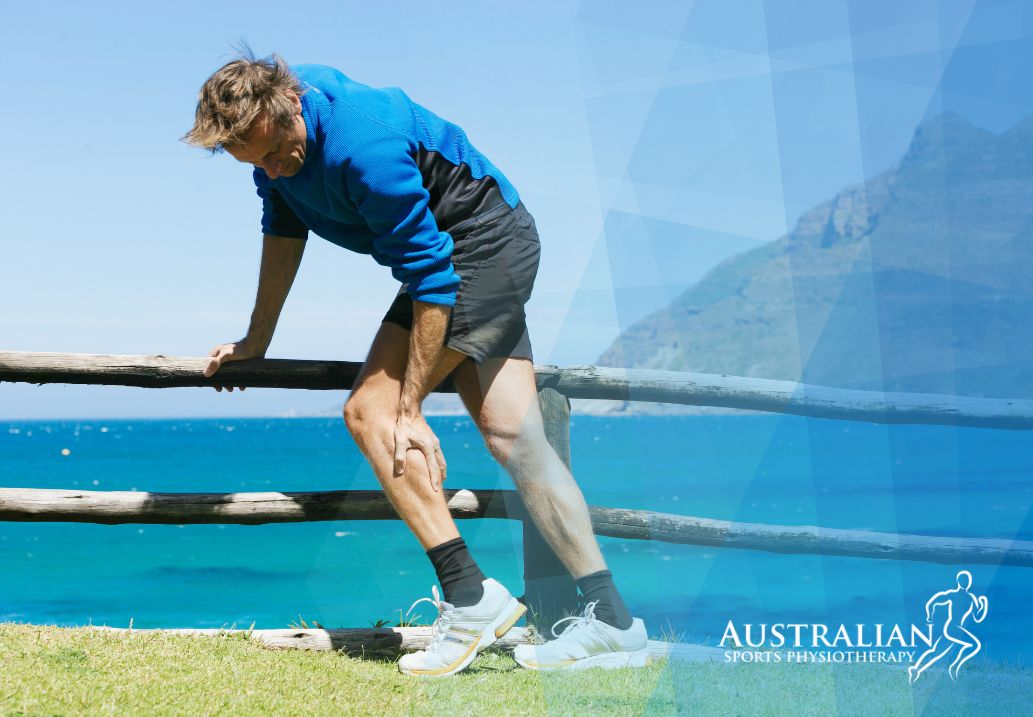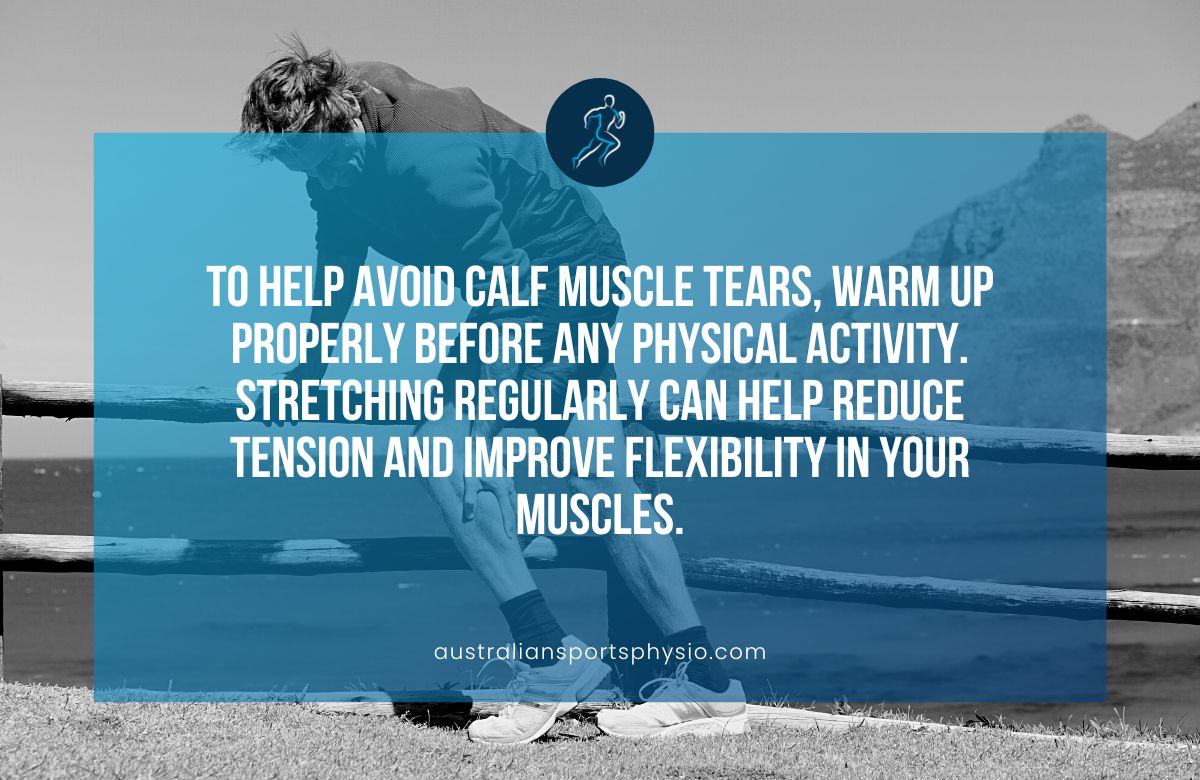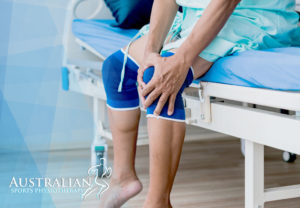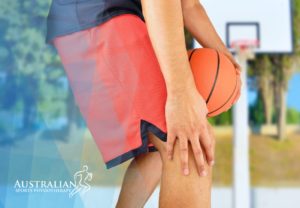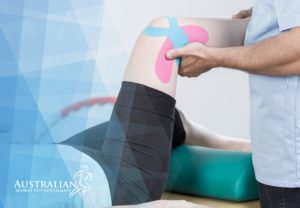Do you experience sudden, severe pain in your calf muscle when running or walking? Are you unable to continue the activity after the pain settles? If so, you may have suffered a calf muscle strain or tear.
Calf muscles are some of the most important muscles in our bodies that support various activities such as walking and running. Injury to these muscles can cause immediate and intense pain, swelling, and loss of strength.
Physiotherapy treatment is invaluable in helping patients with calf muscle tears and strains. Physio manages your condition, decreases pain levels, improves range of motion and mobility, reduces swelling, speeds up healing times, and strengthens muscles involved in the injury process – all as part of an individualised treatment plan.
What is a calf strain or tear?
If not managed appropriately, a calf strain can result in an extended rehabilitation period and the potential for re-injury. Such muscle injuries are sadly common among athletes.
Injury can occur when muscles are forcefully stretched during periods of quick acceleration.
Muscle fibres are torn to some extent when a strain occurs. The tear may be a partial or complete muscle tear, depending on the severity of the injury. It is best to seek medical advice when you suspect a calf muscle tear or strain, as treatment will vary depending on the severity and location of the injury.
Common causes of a calf muscle strain or tear
Accidental overstretching or sudden movement after inactivity can easily result in calf muscle strain. Quick pivots and usually jumps cause strains and abrupt stops that create tension in the calves as the toes are forced towards you while your ankle pulls down too abruptly.
Other causes of calf pain include severe conditions such as peripheral artery disease, nerve damage, trauma, and deep vein thrombosis (DVT), a blood clot that can occur in the calf. Therefore, seeing a healthcare provider to diagnose and treat calf pain is critical.
Types of calf strains
Muscle strains refer to damage done to muscles and tendons that connect muscle to bone, whereas sprains are caused by injuries involving the ligaments connecting bone to bone.
Calf injuries can range from minor to severe, with the gastrocnemius muscle more likely to sustain damage than its underlying counterpart, the soleus.
Calf strains are divided into three distinct grades, each representing varying levels of severity.
Grade 1: Stretching your body can often lead to small tears in the muscle fibres, resulting in a strain that causes pain yet typically won’t prevent you from continuing activity. However, complete healing requires about two weeks for a full recovery.
Grade 2: A partial tearing of the muscle fibres is present in this strain, and to ensure a full recovery, the activity must be reduced. The rehabilitation process takes an estimated five to eight weeks.
Grade 3: This is the most intense type of calf strain, where the affected muscle fibres have been completely torn or ruptured. A complete recovery can take three to four months.
Common symptoms of a calf muscle tear or strain
Depending on the severity of the injury, signs and symptoms may include:
- Swelling
- Tenderness or discomfort
- Motion is restricted.
- Bruising or redness
- Muscle fatigue/weakness
- Spasms of the muscles
Can physio help a torn calf muscle?
If you have a Grade 1 muscle tear, physiotherapy may be necessary for several weeks. A Grade 2 or 3 injury calls for active treatment to promote healing, reduce scar tissue development, and help individuals with a gradual strengthening plan.
During the initial healing period, massage and dry needling promote calf muscle elasticity, while gentle resistance exercises can help reduce potential muscle atrophy.
How to prevent calf muscle tears or strains
To help avoid calf muscle tears, warm up properly before any physical activity.
Stretching regularly can help reduce tension and improve flexibility in your muscles.
Avoid pushing through pain and keep your calf muscles strong and conditioned.
Additionally, wear appropriate shoes that offer sufficient support while exercising.
Lastly, listen to your body and don’t overexert yourself, as this can strain your calf muscles and increase your risk of injury.

Final thoughts on calf muscle tears and strain
Calf muscle tears and strains are painful injuries that can have a long-lasting impact on your ability to move, participate in physical activities, and live life to the fullest.
Calf muscle strains are a common (but treatable) injury among athletes. However, calf pain can have a variety of causes, some of which are serious, such as a blood clot.
To prevent these injuries, warm up properly before exercise, stretch regularly, and avoid overstressing the calf area with sudden movements. With these practices, you can protect yourself from painful calf muscle tears and strains down the road!

